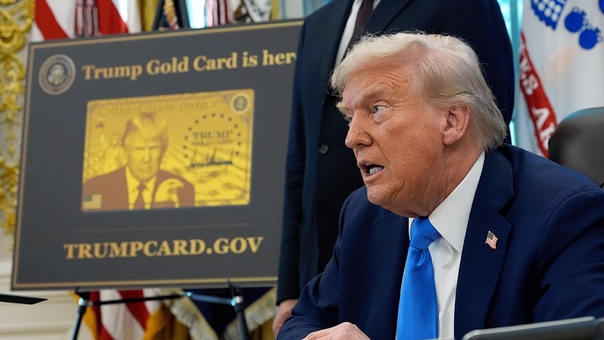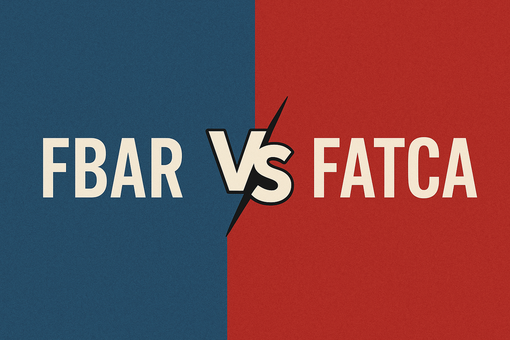Is foreign pension income taxable in the US? What expats must know

The question: are foreign pensions taxable in the US, comes up a lot for retirees living abroad, and the answer is simple. The US counts most money you get from another country as income. This is because the law says income from almost anywhere must be reported. So when you get money from a retirement plan overseas, the IRS wants to see it. You may also need extra forms like Form 1040, Form 8938, and the FBAR.
Key takeaways
- Money from a foreign pension is income for the US. The rules in the tax law and in Publication 575 say most of it must be put on your tax return.
- Monthly payments are not foreign earned income. The Foreign Earned Income Exclusion does not cover them. A tax treaty may change how much tax you pay to the other country, but the US still wants you to report the income and use the Foreign Tax Credit.
- A big one-time payment called a lump sum also counts as income. You list it on Form 1040 and may use Form 1116 to get a credit for any tax you paid overseas.
- Retirement accounts outside the US often must be listed on Form 8938 and the FBAR. These forms tell the government you have foreign financial accounts when they are over certain amounts.
Brought to you by Taxes for Expats (TFX) – the trusted team helping Americans abroad stay compliant with foreign pension reporting and IRS rules. Have a pension or payout and are unsure how it fits on your US return? We're here to help you – learn more about our services or contact us.
Know your pension type: what it means for US tax
Getting the category right is the first step, because everything that happens next – tax, foreign tax credits, reporting, and even treaty relief – depends on this starting point. Courts and the IRS look at how your foreign pension income fits into four simple groups, and that classification shapes how you’re taxed in both countries.
Government pensions – foreign public service plans
These pensions come from a foreign government or local authority for work done in public service. Think of teachers, police officers, or anyone paid directly through public funds.
- These plans are paid out of government money, not a private company retirement fund.
- Article 19 of the 2016 US Model Income Tax Convention says government-service pensions are normally taxed by the country paying them, unless the retiree is both a resident and a national of the other treaty country.
- On a US return, this shows up as pension income on Form 1040 and is taxed under the basic rules in Publication 575, while any foreign tax paid may be handled through Publication 514 and the credit on Form 1116.
- When a treaty copies the US Model, the government-service rule usually overrides the general pension article.
- If the treaty doesn’t shift the tax right, the US treats this exactly like any other pension under Publication 575.
Employer plans – pensions from foreign companies
These are workplace plans set up by a foreign company. They can be defined benefit plans that promise a formula payout or defined contribution plans that hold investments for workers.
Under 402(b) of the Internal Revenue Code, employer contributions usually count as taxable income once they vest, and highly compensated employees may be taxed each year as their benefits grow.
A simple real-world marker is Australia’s compulsory superannuation: official ATO tables set the employer contribution rate at 12% of ordinary time earnings from 1 July 2025 through 30 June 2026.
Personal savings – plans like SIPPs and Pillar 3a
These are retirement accounts you set up and control yourself, not your employer.
According to HMRC and GOV.UK, SIPPs are personal pensions where the saver chooses the investments. Switzerland applies similar logic with its individual Pillar 3a system – the official 2025 rules let employees deduct up to CHF 7,258, while self-employed people without a second-pillar pension fund can contribute up to 20% of income, capped at CHF 36,288.
From a US point of view, a foreign pension plan in this category often has investments that need extra attention. If it holds foreign mutual funds or pooled investments, Form 8621 may be required because of PFIC rules.
Social security-type pensions – state old-age systems
These are government-run retirement benefits such as the UK State Pension, Canada’s CPP/OAS, or Germany’s national pension system. They work like social insurance and can still be taxable in the US unless a treaty or totalization agreement changes the result.
- In the 2025–26 year, the UK’s official rate sets the full new State Pension at £230.25 a week for someone whose National Insurance record began after April 2016 and has at least 35 qualifying years.
- US Totalization Agreements decide which country collects social-security-type taxes and combine work years so people don’t pay full contributions into both systems, yet lose benefits.
- Eshel v. Commissioner shows how carefully courts decide whether a foreign charge is a true income tax or a social security tax before allowing credits or treaty benefits.
- Some systems pay a small lump sum or arrears, and Publications 575 and 915 explain that the US normally treats these as pension or annuity income on Form 1040 unless a treaty says otherwise.
Taxable triggers – when the IRS taxes foreign pensions
Imagine working overseas for years and watching your savings grow, only to learn that the IRS looks at that money in pieces. It checks what went in, how it grew, and what comes out, and each part can bring its own tax bill.
- Contributions. Your own after-tax payments into a foreign retirement plan count as your basis, which means you already paid tax on that part. When your boss puts money into a foreign pension plan, Internal Revenue Code 72 and 402(b) can make those amounts taxable once they belong to you, and Publication 939 explains this in simple money you already paid tax on terms.
- Investment growth. Money growing inside a foreign pension often does not get the same easy break that a 401(k) or IRA gets. The IRS can tax the yearly growth because the plan is not treated like a US plan with built-in deferral.
- Distributions. When your plan pays you, Publication 939 helps show how the IRS splits each payment into two parts: the small part you already paid tax on and the larger part that is taxable. If another country also taxed the same amount, Form 1116 and the foreign tax credit rules in 901 help lower the US tax on that foreign pension income.
How to report foreign pension income
When money comes out of a foreign pension, the IRS wants to know where it goes on your tax return. Think of this as a simple map that shows which form sees the income, when rules kick in, and how each step fits together.
Form 1040
Form 1040 is the main place where you tell the IRS about pension money from another country. The form has very clear spots: 4a/4b handle IRA-type payouts, and 5a/5b handle pensions and annuities on the current Form 1040. These lines are where to report foreign pension on 1040 when the money looks like a monthly payment or a one-time payout.
- Even with no Form 1099-R, you must still show the full amount you got and the part that the US taxes. This follows Topic 410 under Internal Revenue Code sections 61 and 72, which explain what counts as income and how to find the taxable part.
- Keep a small basis list (your own after-tax money you put in earlier). If a treaty changes how your pension is taxed, attach Form 8833 because section 6114 says some treaty claims must be disclosed.
Form 8938 (FATCA)
Form 8938 helps the IRS see foreign assets that the US can’t track. A foreign retirement plan often counts as a specified foreign financial asset under section 6038D. When these assets go over the dollar limits, you file Form 8938 with your tax return. Single people in the US file when assets pass 50,000 dollars at year-end or $75,000 anytime. Married filing jointly doubles these, and people living overseas have higher limits: $200,000 / 300,000 single and $400,000 / $600,000 MFJ.
Form 8938 is about assets and interests, not only bank accounts, and it never replaces the FBAR.
FBAR (FinCEN 114)
The FBAR is not a tax form. It goes to the Treasury, not the IRS, and it covers foreign accounts only. When all your non-US accounts together go over the $10,000 mark even once, the FBAR becomes required. It is due April 15 with an automatic extension to October 15, and the law for this report comes from 31 U.S.C. section 5314.
- A pension with a cash value you can take may count as a foreign account if it sits inside a non-US bank or insurer.
- A self-directed pension holding a foreign bank or brokerage account also counts once the total goes past 10,000 dollars.
- You file the FBAR online with FinCEN, not with Form 1040.

Form 8621 (PFICs)
Form 8621 shows up when a foreign pension plan or other account holds Passive Foreign Investment Companies, which are foreign mutual funds taxed under sections 1291 through 1298. These rules can be very harsh, so many people choose a QEF election or a mark-to-market election instead. These elections help avoid the default PFIC penalty system. The small-holder break usually ends when PFICs total more than 25,000 dollars single or 50,000 dollars joint.
Form 3520 / 3520-A (Foreign trusts)
Some plans are treated like foreign trusts under section 6048, which is when Forms 3520 and 3520-A appear. But many plans are excused from these trust forms because Canadian RRSPs and RRIFs and certain tax-favored retirement plans are covered by Rev. Proc. 2014-55 and Rev. Proc. 2020-17. These two rules remove the trust-form burden for many retirement plans, but other reporting (like FATCA/FBAR) may still apply.
- Form 3520 – used when money goes into or comes out of a foreign trust, but not needed for RRSPs, RRIFs, or other qualifying tax-favored retirement plans.
- Form 3520-A – the yearly trust form that these same excused plans don’t need, even though Form 8938 or the FBAR might still be required.
2025 update – Did the OBBBA change foreign pension rules?
No – The One Big Beautiful Bill Act did not change the basic tax rules for foreign pensions. Yes, it reshaped rates and standard deductions, but didn’t change how the Code taxes or reports individual foreign pensions – sections 61, 72, 402(b), 911, and the existing reporting framework all continue to apply as before.
Treaties – who taxes and when it changes
A tax treaty simply decides which country gets first dibs on taxing a foreign pension. It never removes US reporting, but it can shift who taxes first and how much you can claim later as a foreign tax credit. After that, the US returns and sorts out the final bill so you don’t pay tax twice.
-
United Kingdom
The UK lets people take a tax-free pension commencement lump sum of up to £268,275, but the US does not copy that rule. The US–UK treaty has pension language, yet the saving clause means US citizens still report British pension income. When handling a UK pension on a US tax return, the income goes on Form 1040 (lines 5a/5b), and Form 8833 is used only when you rely on a treaty position. -
Canada
Canada normally withholds 25% on pension payments to nonresidents under Canada’s Part XIII, but the treaty often lowers that to 15% for steady monthly payments. Canada keeps its share first, and then the US taxes the same foreign pension under US rules. The tax Canada takes can usually be used as a foreign tax credit on the US return, which helps reduce double taxation. -
Australia
Under Treaty Article 18, Australia usually gets the first shot at taxing private pensions for its residents. But the saving clause means the US may still tax its citizens again when that money hits the US return. Australian super accounts have pieces that work differently in each system, so the foreign pension plan can’t be assumed to be tax-free or tax-deferred in the US unless the treaty clearly says so. -
Germany
Payments from Germany or the US usually follow the same rules for US expats, as written in the US-Germany treaty. The saving clause still pulls the income onto the US return, and foreign tax credits then help reduce any double tax.
NOTE! Pension income is only exempt or delayed when a treaty gives one country exclusive taxing rights, and the saving clause doesn’t override it. For most foreign pension income, the US still taxes the payment, and Form 8833 is needed when you use a treaty rule to change the default US outcome.
Common mistakes to avoid
Even seasoned expats stumble on reporting foreign pensions – the rules mix income, forms, and information returns in confusing ways. If you are not aware of the missteps that cause the most trouble and how to recognize them early, it might be too late.
- Assuming pensions are tax-free. Many filers misclassify pensions as exempt when, in fact, the IRS foreign pension rules say otherwise.
- Not reporting passive accounts. Even if you think a plan is just sitting there, it may trigger foreign account tax compliance obligations.
- Skipping key forms. Failing to file FBAR, Form 8938, or Form 8621 for PFICs can create steep penalties.
- Overlooking foreign trusts. Certain plans may be treated as a foreign trust, requiring a check against reporting exceptions.
- Asking too late. Do I have to report foreign pension income? The answer is almost always yes – income and/or account disclosure applies.

Special cases – how foreign pensions and benefits are taxed
Treaties keep working even as your life changes – when you start foreign social security, move back to the US, or juggle rules in several countries.
Foreign social security
Most foreign social security works just like a foreign pension once you’re in the US – it’s taxable unless a treaty clearly gives the other country exclusive taxing rights. Some treaties shift who taxes first, but the saving clause often brings the income back into US taxation. Always check the treaty article for social security before assuming the benefit is tax-free.
Back in the US with a foreign pension
Each foreign pension payout goes on Form 1040, even after you’ve moved home. Taking money out before age 59 can trigger a 10% early-distribution tax under section 72(t) unless an exception is claimed on Form 5329. Only the growth is taxed when you withdraw; contributions you’ve already paid tax on form your cost basis.
Don’t risk penalties – let an expat tax pro guide you
Handling foreign pensions on your own is risky: a single misstep with reporting or treaty claims can trigger IRS audits, extra tax, and steep fines. The complexity multiplies when plans include mutual funds, early withdrawals, or foreign trust rules.
That’s where Taxes for Expats steps in. We specialize in helping Americans abroad and returnees untangle foreign pension reporting. With decades of experience, we make sure your foreign accounts and pension income are handled correctly the first time.

FAQ
Yes US citizens and residents generally must report foreign pension income, with treaties affecting where it’s taxed rather than whether it’s reported.
Sometimes, employer contributions to many non-US plans are included when vested, and certain accruals can be taxable before payout.
Report pensions and annuities on Form 1040 lines 5a/5b (IRA-type payments on 4a/4b), and attach a statement if no 1099-R is issued.
Generally, no treaties may shift taxing rights or reduce double tax, but the savings clause often preserves US tax for citizens.
Report on Form 1040 lines 5a/5b, apply any US–UK treaty provisions you qualify for, and file Form 8833 if you take a treaty-based position.
Determine whether you’re the PFIC shareholder and, if so, file Form 8621 and consider QEF or mark-to-market elections.
FBAR reports foreign accounts when your aggregate exceeds $10,000, while FATCA Form 8938 reports specified foreign assets when thresholds are met.
You risk underpaid tax, accuracy-related penalties, and separate FBAR or FATCA penalties that can be severe.



